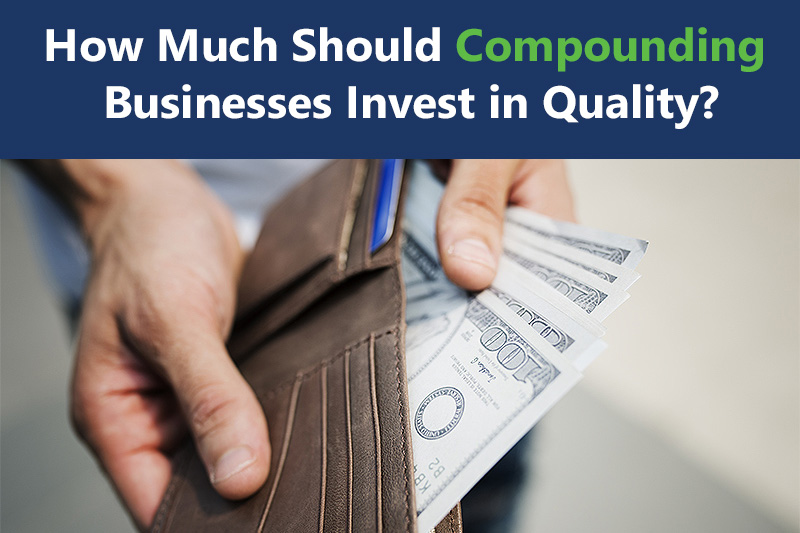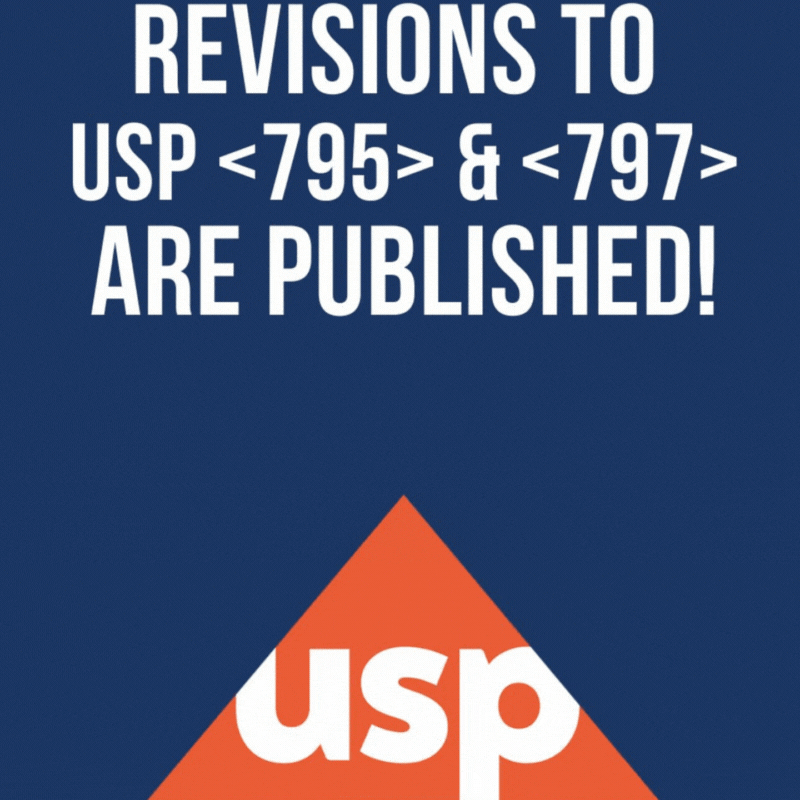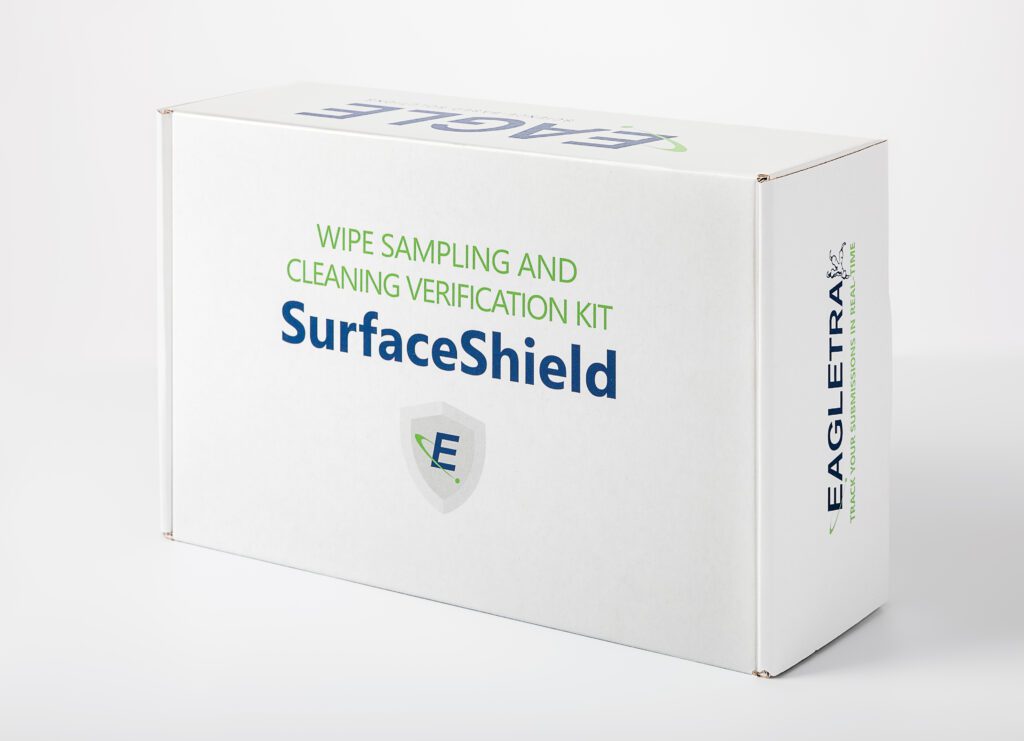
Cost of Quality and the Price of Nonconformance
As the world becomes more aware of the benefits of personalized medicine, the result is increased potential business for the compounding industry. However, many compounding operations continue to face a risk of business loss due to inadequate quality systems. Quality in compounding relates not only to regulatory compliance, but also affects the bottom line, and is a key factor in protecting your business. Investing in quality systems saves money in the long run, and prevents costly expenses related to correcting errors. Above all, quality systems ensure the safety of medications dispensed to patients.
Thank you for reading this post, don't forget to subscribe!What is “Cost of Quality?”
Cost of quality (COQ) is “a methodology that allows an organization to determine the extent to which its resources are used for activities that prevent poor quality, that appraise the quality of the organization’s products or services, and that result from internal and external failures.” (a)
Simply put, COQ measures how much money is being spent to proactively prevent failures versus to correct failures. A compounding business should diligently invest in prevention and appraisal systems to avoid the difficult consequences of nonconformance.
In the Compounding World
The table below outlines examples of the Cost of Quality versus the Price of Nonconformance in the compounding industry. In general, operations that invest more in quality suffer less of the price of nonconformance.
Cost of Quality refers to the money spent to avoid failures. This includes:
- Prevention Costs
- Appraisal Costs
The Price of Nonconformance refers to money spent to correct failures, and includes:
- Internal Failure Costs
- External Failure Costs
Cost of Quality |
Price of Nonconformance |
|---|---|
|
Prevention costs include:
Appraisal costs include:
|
Internal failure costs include:
External failures costs include:
|
Recommended Cost of Quality for Compounding Facilities
All compounding facilities are different. However, through working with hundreds of establishments including pharmacies, outsourcing facilities, GMP’s and other types of compounding operations, Eagle has observed and recommends the following:
- The average investment in quality for most successful small-med size compounding facilities ranges between 7-10% of annual revenue
- Larger facilities should be spending 1-3% of their annual revenue on quality
- The larger the operation, the closer quality costs will be to 1-3% of annual revenue
- The smaller the operation, the closer quality costs should be to 10% of annual revenue
Let’s take a look at the cost of quality from a compounding perspective using fictional companies representing real-life scenarios.
Example 1 – AAA Pharma |
|||||||||
|---|---|---|---|---|---|---|---|---|---|
| AAA Pharma has been in operation for decades, and has experienced steady growth and success throughout the years. The pharmacy has established solid relationships with their clients, and its management team is confident that the product they dispense is safe. In an effort to cut expenses they reduce quality costs and forward the budget towards development of new products that will help increase margins. | A customer complains of an adverse reaction to medication which triggers an FDA inspection. The Agency requests a recall of all product still within expiration. The pharmacy undergoes lengthy inspections leading to discovery of quality issues. The Pharmacy must now look for a lawyer and consultants to assist in the recall process, while beginning the process of remodeling to meet recommendations outlined in compounding guidelines. | ||||||||
|
|
||||||||
|
Recommended Investment in Quality $350,000 to $1,050,000
|
Price of Nonconformance $15 million |
||||||||
Example 2 – ABC Rx |
|||||||||||||
|---|---|---|---|---|---|---|---|---|---|---|---|---|---|
|
ABC Rx is a pharmacy with annual revenue averaging $2.5 million dollars. They invite a consulting service to perform a Gap Analysis and the results from the audit suggest adjustments which will cost nearly $200,000. The investment is not something ABC Rx is able to make immediately. The adjustments are postponed for the following year depending on sales.
|
The pharmacy receives an unexpected knock at the door from the FDA. The citations are nearly identical to those from the previous Gap Analysis. ABC Rx is requested to:
|
||||||||||||
|
|
||||||||||||
|
Recommended Ongoing Investment in Quality $175k – 250k (7% – 10% of Annual Revenue (b)) Year 1 Additional Investment in Quality (Based on findings during audit) + $200k for renovations (one-time)
|
Price of Nonconformance $2,161,500 |
||||||||||||
Find Out How a GAP Analysis Can Save Your Pharmacy
Are you prepared for the inevitable knock at the door? How can you ensure there are no gaps in your operation which may lead to costly outcomes?
These scenarios illustrate real-life outcomes that many facilities have encountered. Investing more in quality leads to a lower price of nonconformance as in the example below.
Example 3 – XYZ Pharmacy |
|||||||
|---|---|---|---|---|---|---|---|
| XYZ Pharmacy invests a great deal in personnel training and does a great deal to follow USP standards. In an effort to ensure compliance the Pharmacist in Charge sources regulatory consultants to come perform a gap analysis audit. Consultants discover issues with XYZ Pharmacy’s air handling system, operating procedures, aseptic technique, among other areas where the operation falls short of compliance. XYZ performs costly but needed renovations, and develops new procedures, while correcting compounding personnel errors through training. They also test products according to the requirements outlined in the USP guidelines at minimum. They routinely qualify and inspect all equipment and have in-house QA personnel dedicated to ensuring quality in all compounding activities. | Receive few complaints which are resolved in a timely manner. Regulatory agency conducts routine inspections. Observations are minimal and easily addressed. | ||||||
|
|
||||||
|
Recommended Investment in Quality $420k – $700k (7% – 10% of Annual Revenue. (b))
|
|||||||
Recalling and disposing of products, enduring lengthy litigation proceedings, processing reimbursements, and repairing a damaged reputation are among the daunting tasks that no compounding business ever wants to face. On the contrary: documenting procedures, qualifying & certifying equipment, performing routine audits, training and evaluating personnel, and testing end products, may seem tedious but are more favorable in comparison. These are examples of building quality into the process of compounding. Proactively investing in quality is far less costly than paying the price of nonconformance.
Eagle encourages compounding facilities to access and measure the cost of quality in your operation, and make the necessary investments towards quality systems. This will not only allow you to stay ahead of regulations, but to limit the risk of incurring the costs related to issues of quality.
“Historically not many people had their eyes on this industry, however today, everyone is looking. Due to the increased use of personalized medicine, the general public is gaining more awareness about compounding now more than ever. Because quality shields us from patient and business risk, Cost of Quality must be budgeted, otherwise it will come back and effect your business in the long run. And it’s not ‘if’, but ‘when’” – Ross Caputo, Ph.D.
To learn more about how we can help you determine the quality needs of your operation, contact us today. Our consultants are ready to help ensure your business is operating in a way that saves your money both now and in the long run.
References:
- Cost of Quality – ASQ – https://asq.org/quality-resources/cost-of-quality
- Through working with hundreds of establishments including pharmacies, outsourcing facilities, GMP’s and other compounding operations, Eagle has observed and recommends the following:
- The average investment in quality for most successful small-med size compounding facilities ranges between 7-10% of annual revenue.
- Larger facilities should be spending 1-3% of their annual revenue on quality.
- The larger the operation, the closer quality costs will be to 1-3% of annual revenue
- The smaller the operation, the closer quality costs should be to 10% of annual revenue
Additional Resources
Business Case for Quality – Pharmaceutical Quality System (ICH Q10) Conference. PowerPoint Presentation. https://www.fda.gov/media/82992/download
- Eagle New Year Party & Eagle Employee Of The Year Award Ceremony, 01/13 - March 11, 2024
- HRT Functional Medicine Symposium, 02/15 – 02/17 - March 11, 2024
- APhA, 03/22 – 03/25 - March 11, 2024




